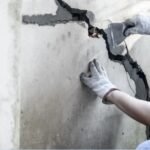Meta Description
Design a safe, accessible home for loved ones with these essential tips. Explore key upgrades and renovations to ensure safety and comfort for aging family members.
Aging in place is a priority for many seniors, and creating a future-proof home ensures comfort, safety, and accessibility for aging family members. As loved ones grow older, adapting their living spaces to meet changing needs can make a world of difference in maintaining their independence. This guide provides practical tips for designing a home that balances functionality and comfort without compromising aesthetics.
Why Future-Proofing Matters
Aging comes with physical challenges like reduced mobility, impaired vision, and balance issues. Additionally, chronic conditions such as arthritis can make daily tasks more difficult. By proactively preparing a home, you can avoid costly retrofits down the line and foster a safer living environment. Thoughtful renovations and adjustments also promote mobility, minimize accidents, and ensure emotional well-being for aging family members.
Key Considerations for a Future-Proof Home
Here are the critical aspects to focus on while designing or renovating a home for aging family members.
1. Prioritize Accessibility
Ensuring seamless movement throughout the home is essential. Accessibility features cater to individuals with mobility challenges and make spaces inclusive for everyone.
- Wider Doorways and Hallways
Doorways should be at least 36 inches wide to accommodate wheelchairs or walkers. Open floor plans that minimize tight spaces and obstacles are particularly helpful.
- Step-Free Entrances
Eliminate stairs at entryways by installing ramps or step-free entranceways. Consider driveways or pathways with gentle slopes to provide easy access.
- Residential Elevators
Multistory homes pose challenges for people with mobility limitations. Installing residential elevators Boise, ID is an ideal solution to provide safe and quick access between floors. These elevators add convenience without compromising the home’s aesthetic appeal.
2. Install Slip-Resistant Flooring
Falls are a leading cause of injuries for seniors. One way to mitigate this risk is by switching to slip-resistant flooring materials in key areas such as the kitchen and bathroom. Opt for materials like textured tiles, cork, or low-pile carpet for better grip and shock absorption.
3. Upgrade Bathrooms for Safety
Bathrooms are among the most hazardous areas for older adults. Simple yet effective upgrades can drastically increase safety.
- Grab Bars
Installing grab bars near the shower, bathtub, and toilet offers additional support, preventing slips and falls.
- Walk-In Showers or Tubs
Step-in bathtubs or walk-in showers with no thresholds make it easier for people with limited mobility to bathe independently.
- Comfort-Height Toilets
Raised toilet seats or comfort-height toilets can ease strain on aging joints.
4. Improve Lighting
Adequate lighting significantly reduces the risk of falls and enhances visibility for tasks like reading or meal preparation.
- Install motion-sensor lights in hallways, staircases, and bathrooms to illuminate pathways automatically.
- Use warm but bright LED lighting to minimize harsh glares.
- Incorporate task lighting in areas like the kitchen and living spaces to provide focused illumination.
5. Upgrade Kitchen Features
The kitchen can also benefit from thoughtful modifications to improve safety and usability for older adults.
- Choose pull-out shelves or drawers for easy access to items.
- Install lever-style handles for cabinets, as they require less grip strength compared to traditional knobs.
- Opt for appliances with easy-to-read displays and ergonomic controls.
6. Focus on Smart Home Technology
Integrating smart devices into the home can add convenience and enhance safety for aging family members.
- Install voice-activated assistants like Google Home or Alexa to control lights, appliances, and alarms.
- Smart security systems, including cameras and alarms, provide peace of mind for both seniors and their families.
- Use medical alert devices that can notify caregivers in case of emergencies.
7. Make Bedrooms Comfortable
Bedrooms should be designed for maximum comfort and functionality.
- Position the bed at an appropriate height to avoid strain while getting in or out.
- Keep frequently used items within reach by incorporating bedside storage solutions.
- Install blackout curtains to improve sleep quality by blocking excess light.
Plan for the Future with Small Adjustments
Even if aging family members don’t currently need mobility aids or extra support, making small adjustments is a smart move. Adding grab bars, switching to slip-resistant materials, or incorporating extra lighting might not seem essential now, but they can save time, effort, and money later.
Designing a future-proof, accessible home isn’t just about functionality—it’s about ensuring comfort, independence, and dignity for your aging loved ones. By implementing these upgrades and renovations, you pave the way for a safer and more comfortable living environment that will serve them for years to come.






